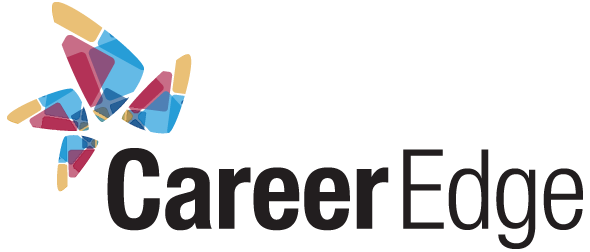
The world of work is changing rapidly, yet many employers remain rooted in traditional practices that no longer serve today’s workforce. With employees increasingly prioritizing flexibility, career growth, and a healthy work-life balance, companies that resist adapting risk alienating and losing their best talent.
The signs are clear: employee demands are evolving, but are employers keeping pace?
This article explores why today’s talent values flexibility and growth opportunities—and what’s at stake for companies that refuse to keep up.
The Changing Landscape of Workplace Expectations
Historically, work was often a rigid, “one-size-fits-all” experience. Employees adapted to their roles, clocked in and out at set times, and expected little to no deviation in work structure.
However, today’s top talent expects more: they’re looking for workplaces that provide flexibility and foster their growth.
A survey by Statistics Canada highlights the shift: nearly two-thirds of employees cited flexible work options as a key factor in choosing a job. And it’s not just about remote work. Flexibility now includes options such as a four-day workweek, remote and hybrid schedules, and opportunities for personal growth and development. Employers clinging to rigid, outdated structures may be in what could be called their “villain era”—unwittingly turning away talent by insisting on practices that no longer align with employees’ values and needs.
Flexibility: The New Non-Negotiable
For many workers, especially younger generations, flexibility has gone from a perk to an expectation. Research shows that 60% of employees would likely switch jobs for greater flexibility in work hours or location. Flexibility impacts more than just day-to-day schedules; it’s about respecting employees’ lives outside of work, acknowledging that they are more than just their job roles.
Some organizations hesitate to offer flexible options due to fears of reduced productivity or lack of control. However, studies, including one from McKinsey, indicate that flexibility can actually increase productivity and employee satisfaction. When employees feel they have a say in how they work, they’re more engaged, loyal, and willing to go the extra mile.
Employers unwilling to accommodate flexible work arrangements may find themselves inadvertently pushing employees toward competitors who offer these sought-after options. The cost of this turnover isn’t small. The financial impact of recruiting and training replacements, coupled with lost productivity, can reach up to $100,000 per employee for some companies.
Growth and Development: More Than Just a Ladder to Climb
Beyond flexibility, employees increasingly seek growth opportunities. But growth today doesn’t always mean moving up a traditional career ladder. Many employees now view development as a chance to enhance their skills, take on new challenges, and find greater purpose in their roles.
According to a recent survey by Express Employment Professionals, over 25% of employers facing high turnover noted that a lack of development opportunities was a top factor in employees’ decision to leave. Yet, many companies still overlook the importance of training, skill-building, and career development. Providing employees with these opportunities doesn’t just benefit them; it fuels innovation, reduces turnover, and builds a strong pipeline of skilled workers prepared for future challenges.
Examples of Modern Growth Opportunities Include:
- Cross-Departmental Assignments: Employees can gain fresh perspectives and expand their skill set by working temporarily in different departments.
- Stretch Assignments: Giving employees challenging projects outside their usual scope helps build resilience and adaptability.
- Mentorship Programs: Pairing employees with mentors fosters both personal and professional growth, creating a culture of learning and mutual support.
When employers fail to prioritize development, they signal to employees that there’s limited room for growth, inadvertently encouraging them to look elsewhere for advancement. And as top talent walks out the door, companies are left scrambling to fill the void.
The Hidden Costs of Sticking to Tradition
In today’s competitive job market, employers who don’t adapt risk not only losing talent but also tarnishing their reputation as a desirable place to work. As more companies offer competitive perks—like remote work options, flexible hours, and ample development opportunities—those who don’t follow suit may find themselves viewed as rigid and outdated.
A 2023 survey found that turnover costs for a single employee can average nearly $41,000, considering lost productivity, recruitment, and training expenses. For some employers, these costs can soar to over $100,000 per year, especially when turnover is high. Beyond the financial impact, high turnover strains existing staff, lowers morale, and disrupts productivity.
Companies that take an “adapt or die” approach to their policies will be well-positioned to retain their talent. Those who continue to view flexibility and development as “optional” perks are essentially choosing to put themselves at a disadvantage.
How Employers Can Step Out of the “Villain Era”
The good news is that reversing this trend doesn’t require a complete overhaul. Employers can make incremental changes that have a significant impact on employee satisfaction and retention:
- Offer Flexible Work Arrangements: Start by allowing remote work options, hybrid schedules, or flexible hours. These changes signal to employees that their time and well-being are valued.
- Invest in Development Opportunities: Create avenues for skill-building, training, and career progression. Offer both formal training and informal growth experiences, such as mentorship and cross-functional projects.
- Listen to Employee Feedback: Regularly survey employees about their satisfaction with workplace policies. Listening to feedback and acting on it shows employees that their voices matter.
- Prioritize Work-Life Balance: Encourage employees to disconnect outside of work hours, and set realistic workload expectations. When employees feel supported in achieving a work-life balance, they’re less likely to experience burnout or look for other jobs.
A Call to Employers: Embrace Adaptability for a Thriving Workplace
In an era where employees are more vocal about their needs, the companies that adapt stand to benefit most. Flexibility and development opportunities are no longer “nice-to-haves” but essentials for attracting and retaining top talent. Employers who fail to recognize this risk alienating their workforce, contributing to a costly cycle of turnover and retraining.
The future of work is evolving, and with it, the expectations of the people who make organizations thrive. By embracing change and valuing employees’ needs, companies can cultivate a resilient, loyal, and engaged workforce.
Is your organization prepared to make the shift?






